TS013
Sapporo Duets
Joëlle Léandre & Ryoji Hojito
"The audience love it and how many times can you honestly say you hear laughter at a free improv gig?"
Philip Clark
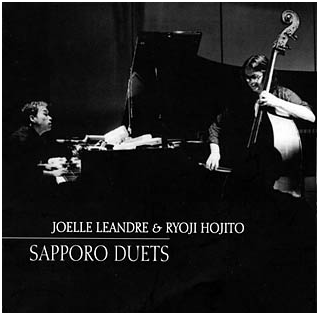
JOËLLE LEANDRE & RYOJI HOJITO – SAPPORO DUETS
impro 1.
impro 2.
impro 3.
impro 4.
impro 5.
impro 6.
impro 7.
impro 8.
impro 9.
impro 10.
All compositions by Joëlle Léandre and Ryoji Hojito
Joëlle Léandre, double bass
Ryoji Hojito, piano
SOME REVIEWS:
"At 50, Joëlle Léandre is one of the towering musicians of her generation. Ryoji Hojito, a longterm collaborator with Otomo Yoshihide, is a remarkably tactile pianist whose precise touch on the keyboard and measured delving into the in tenor are as communicative as the notes he plays. The vastly experienced bassist clearly recognises something special in this meeting and is determinated to mark the occasion with emphatic playing, especially with the bow. A shared soundworld is established immediately; Intimate yet rigorous investigations follow, with room for laughter.
In his sleevenotes for ‘Incandescences’ Bertrand Serra says, ‘These two musicians are too alike to simply mirror one another’, it’s a neat paradox and perfectly apt: Léandre and Occhipinti have been working as The European Duo since 1995. The pianist from Sicily, is rising in stature (this live recording dates from 1997). His style is restless, showering sparks, flurries and allusions. It’s often disjunctive, skipping ingical connections and making bold leaps across the keyboard’s expanse. He matches the bass virtuoso in the confidence of his soloing. Léandre is recorded less graphically close here, but assured improvising and lightning responsiveness justify the album’s title. ”
Julian Cowley (July 2001) in “The Wire” (UK)
"Eén van de interessantste ontmoetingen van Joëlle Léandre heb ik altijd die met Eric Watson gevonden (“Palimpseste” – Hatart CD 6103). Op dit duet met de Japanse pianist, klinkt ze heerlijk dominant, (al mag Hojito zich op de achtste schets alleen uitleven) veel meer dan op de vorige Jazz’halo/Tonesetters “Incandescences” met Giorgio Occhipinti. “10 Improvisations” is de ondertitel van deze cd. Of ze nu gestreken speelt of pizzicato, of haar stem gebruikt, werken met Léandre moet een belevenis zijn. Jazz en hier geïmproviseerde muziek zijn een spel van interactie van het ogenblik. Wie dat nog niet begrepen heeft en de humor die deze muziek kan uitstralen nog niet ervaren kon, luister naar de live-schets tien, een verhaal van woorden, onomatopeeën en klanken, net nadat Hojito zijn harmonica (melodica?) heeft neergelegd. Wie zijn chronometer wil ijken, doet dat liever niet op de eerste track. Die duurt tien minuten langer dan aangegeven. Heel suggestief fotomateriaal! * * *"
Sim Simons in “Jazzmozaïek” (B) #3 (1ste jaargang)
"Mit der Kraft früher Charlie-Haden-Aufnahmen steigt Joëlle Léandre ein in den Dialog mit dem japanischen Pianisten Ryoji Hojito, der in heisigen Kreisen noch nicht so bekannt ist, sich aber nachhaltig empfiehlt als Meister eines Pianos von grosser Bandbreite. Sapporo, der Ort des mitgeschnittenen Konzerts im September 1998, kennt ihn auch als Direktor eines internationalen Now Music Workshops für junge Musiker. Léandres kraftvolle Meisterschaft sowohl mit dem gezupften wie dem gestreichenem Bass kann sich in diesem Dialog vollständig entfallen. Ihre Nähe zu den Klangmeistern des 20. Jahrhunderts, John Cage, Morton Feldman oder Giacinto Scelsi geben ihrem Spiel einen kreativen Hintergrund. Und der hat sie in den letzten Jahren zu einer aussergewöhnlichen Partnerin für Musiker wie Jon Rose, Maggie Nicols, Irène Schweizer, Fred Frith oder Evan Parker gemacht, ausgewiesen ist das auf einer lange Liste von rund 70 Aufnahmen in genau 20 Jahren. Ihre grosse Virtuosität kommt zum Beispiel zum Ausdruck in der Fähigkeit, mehrstimmig zu spielen.
Die Aufnahme ist von großer, manchmal geradezu berstender Spontaneität, die immer wieder Stimmungs- und Tempiwechsel hervorruft. Die erwähnte Einführung führt zu langen elegischen Passagen, denen im zweiten Stück – alle sind namenlos – ein zerrissener hektischer Dialog folgt. Die Zeitangaben der Stücke im Begleitheft sind übrigens nicht immer korrekt, was der Kwalität der CD aber keinerlei Abbruch tut. Im 4. Stück erreichen die Dialoge nach ständiger Steigerung einen emotionalen Höhepunkt, dem wiederum eine schnelle D-Zug-artige Fahrt folgt. Nach Léandres Soloauftritt bekommt Hojito im achtsten Titel Gelegenheit, die gegenständliche Seite seiner Kunst zu zeigen, wobei Vergleiche zu Keith Jarrett ungerecht wären, gelingt es ihm doch immer wieder, vor dem Eintauchen in Jarrett-Impressionen “die Kurve zu bekommen”. Zwei Musiker von großem Einfühlungsvermögen und technischer Perfektion sind in Sapporo zusammengetroffen, die zugleich die globale Qualität der freien Improvisation belegen, keinesfalls aber nur eine Begegnung von Europa und Asien präsentieren, auch wenn das präparierte Klavier gelegentlich asiatische Impressionen aufkommen lässt."
Hans-Jürgen von Osterhausen in “Jazz Podium” (Germany) from October 2001
“Like our own Barry Guy, Joelle Léandre is a bass playing polymath whose work glides effortlessly between improvised and fully composed music. John Cage wrote and adapted works especially for her towards the end of his life (documented on a remarkable CD on the Auvidis Montaigne label) and her marvellous duo set with the polystylistic powerhouse pianist Giorgio Occhipinti was reviewed in JR22.
If Occhipinti accompanied Léandre with references taken from as wide a variety of sources as Meade Lux Lewis and Cecil Taylor, Japanese pianist Ryoji Hojito is at first glance a more undiluted free improv pianist. He’s got formidable chops, as powerful left hand rolls are overpowered by choppy, slicing right hand runs and yet he also knows when to turn up the quiet. Then on the eight improvisation the music suddenly changes direction as he goes all Keith Jarrett on us, playing richly lyrical lines that are occasionally given an odd acoustic distortion.
The fifth of these improvisations is outstanding as Léandre and Hojito toss tiny melodic fragments between them which move beyond the cut and thrust of workaday improvisation into something altogether more sensitive and closely argued. The versatility of Léandre’s bass playing is impressive. She can do the full frontal workouts that is integral to the aesthetic and yet there’s also something skittish, almost flirtatious, about the placing of tiny pizzicato sounds from the top of her instrument.
Her bowed playing is strikingly beautiful and her repertoire of squeaky toys and vocalisations adds a surreal edge to her playing.
The final track starts with both of them vocalising in a style that sounds uncannily like then highly suggestive “Suits you, Sir” tailors from The Fast Show. The audience love it and how many times can you honestly say you hear laughter at a free improv gig?”
Philip Clark in Jazz Review (UK)
“Specializing in solo work, pianist Ryoji Hojito, 42, is one member of Japan's burgeoning improvisational music scene who is relatively unknown in the West. Committed to an expanded range of expression, he intertwines almost traditionally jazzy keyboard phrasing with irritating piano innards by introducing so-called prepared "little" instruments such as bells, rubber balls and squeeze toys to the strings.
Accomplished in diminutive, targeted gestures, he shines in these 10 succinct improvisations, recorded live in his hometown of Sapporo, located on the northernmost of Japans four main islands. Praise for a successful duo, of course, has to be shared with his associate, French bassist Joëlle Léandre, who is unquestionably comfortable in this format. Justly celebrated for her interpretation of new music as well as improv, over the years she has partnered such pianists as Italian Giorgio Occhipinti and Swiss Irène Schweizer, plus British guitarist Derek Bailey, Italian trombonist Sebi Tramontana and German accordionist Rüdiger Carl. Despite the size of their respective instruments, Léandre is as committed to large movements as Hojito is to small ones. So, within the course of these instant compositions, she plugs the spaces left open from his playing and he does the same for hers. Using only hands, fingers, muscles and voice, Léandre is able to inject an impressive array of emotions into pieces like "4'36"." Scratching basso lines, she'll suddenly jump into the treble clef, or change her quiet, tongue rolling vocalizing to scat singing in a contrived, throaty Satchmo voice. Meantime the pianist is spending as much time squeezing plush toys and compressing notes from what sounds like an accordion or perhaps a chromatic harmonica as hitting the keys. Finally as his attack shifts from worrying, speedy new thing clusters to a Spanish-tinged dance rhythm, the bassist comes out with some long loping pizzicato lines.
Other times, as on "6'38"," Hojito seems to have loaded his instrument with more hardware than Fred Van Hove, Denman Maroney and Burton Greene combined, to create an echoing mechanical pitch. As he moves from tonal clusters to steady pounding, Léandre extends her scratchy arco excursions. Not that everything is unfamiliar. Hojito could be an impressionistic Bill Evans on the very straight sounding "6'10'" with Léandre as Scott LaFaro. Suddenly at one point though, an accordion's rumbling reverberations replaces the preceding small, nervous piano notes. She answers them with powerful bass bumps. Elsewhere, balls rolls along the piano innards while glissandos sound and little bells peal, while the four strings of the double bass do perfect imitations of a baroque violin or, more amazingly, a racing car accelerating. In short, the participants in this duo recital prove that in the right hands, nearly everything sonic can be created with only acoustic instruments.”
Ken Waxman in JazzWeekly.com
“Realizadas desde planteamientos y estéticas muy distintas, he aquí dos muestras de piano y contrabajo publicadas en el pequeño y magnífico sello belga Jazz´halo. La primera, conversación musical de Joëlle Léandre con el siciliano Giorgio Occhipinti (desde 1995 actúan como The European Duo) es conducida felizmente por ambientes que recorren paisajes de diáfano, amplio contenido, que nunca vacíos; al contrario, abiertos de par en par y con la complicidad y maestría de una experta partenaire como es la contrabajista. Aparecen momentos románticos, líricos, recordatorios de los Ravel, Stravinsky, y también herederos del más insidioso Cecil Taylor (escucha el tema en solo, por ejemplo). Fue el disco que dió a conocer a Occhipinti en Europa.
El dúo con el japonés Ryoji Hojito se plantea, previamente, desde el piano preparado. El ambiente está mucho más encorsetado, la conversación es más seria, sin perder la libertad de rehacer continuamente, sin posibilidad de retorno ni de mirar atrás. Es terreno propicio al cluster, a la espontánea tonalidad, a la insistencia en determinadas claves... Estos diez duetos en vivo, desde Sapporo, acaban con el humor de la última pieza que el público interrumpe con risas y aplausos: una improvisada alternancia de monosílabos bilingües adornados con escasas notas. Otra fantástica historia, hecha realidad, con un pianista principalmente consolidado en su continente.
La comodidad de Joëlle cuando toca en dúo, y en estos en concreto tan diferentes, está muy de manifiesto: su contrabajo alterna, construye y de-construye cuando apetece, lleva y trae hasta el máximo las cuerdas, que revierten en nuevos sonidos. La contrabajista estuvo una larga temporada en Japón en 1998, trabajando con diversos músicos, con distintas formaciones y con varios discos publicados en diferentes sellos.
Posteriormente a estas grabaciones, Jazz'halo ha publicado a Occhipinti un disco con su noneto Hereo, y este mismo año a Joëlle Léandre un doble en solo (Concerto Grosso).”
Chema Chacón in Oro Molido
In case you LIKE us, please click here:
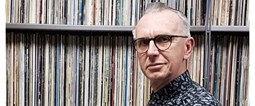
Foto © Leentje Arnouts
"WAGON JAZZ"
cycle d’interviews réalisées
par Georges Tonla Briquet

our partners:
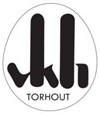


Hotel-Brasserie
Markt 2 - 8820 TORHOUT
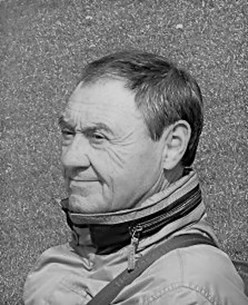
Silvère Mansis
(10.9.1944 - 22.4.2018)
foto © Dirck Brysse
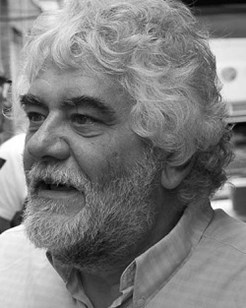
Rik Bevernage
(19.4.1954 - 6.3.2018)
foto © Stefe Jiroflée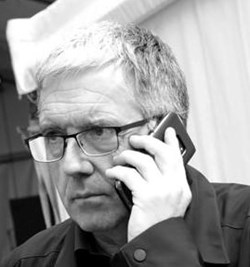
Philippe Schoonbrood
(24.5.1957-30.5.2020)
foto © Dominique Houcmant
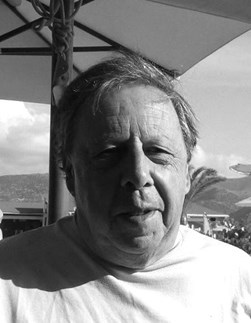
Claude Loxhay
(18/02/1947 – 02/11/2023)
foto © Marie Gilon
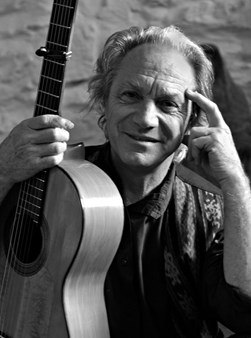
Pedro Soler
(08/06/1938 – 03/08/2024)
foto © Jacky Lepage
Special thanks to our photographers:
Petra Beckers
Ron Beenen
Annie Boedt
Klaas Boelen
Henning Bolte
Serge Braem
Cedric Craps
Luca A. d'Agostino
Christian Deblanc
Philippe De Cleen
Paul De Cloedt
Cindy De Kuyper
Koen Deleu
Ferdinand Dupuis-Panther
Anne Fishburn
Federico Garcia
Jeroen Goddemaer
Robert Hansenne
Serge Heimlich
Dominique Houcmant
Stefe Jiroflée
Herman Klaassen
Philippe Klein
Jos L. Knaepen
Tom Leentjes
Hugo Lefèvre
Jacky Lepage
Olivier Lestoquoit
Eric Malfait
Simas Martinonis
Nina Contini Melis
Anne Panther
France Paquay
Francesca Patella
Quentin Perot
Jean-Jacques Pussiau
Arnold Reyngoudt
Jean Schoubs
Willy Schuyten
Frank Tafuri
Jean-Pierre Tillaert
Tom Vanbesien
Jef Vandebroek
Geert Vandepoele
Guy Van de Poel
Cees van de Ven
Donata van de Ven
Harry van Kesteren
Geert Vanoverschelde
Roger Vantilt
Patrick Van Vlerken
Marie-Anne Ver Eecke
Karine Vergauwen
Frank Verlinden
Jan Vernieuwe
Anders Vranken
Didier Wagner
and to our writers:
Mischa Andriessen
Robin Arends
Marleen Arnouts
Werner Barth
José Bedeur
Henning Bolte
Erik Carrette
Danny De Bock
Denis Desassis
Pierre Dulieu
Ferdinand Dupuis-Panther
Federico Garcia
Paul Godderis
Stephen Godsall
Jean-Pierre Goffin
Claudy Jalet
Chris Joris
Bernard Lefèvre
Mathilde Löffler
Claude Loxhay
Ieva Pakalniškytė
Anne Panther
Etienne Payen
Quentin Perot
Jacques Prouvost
Renato Sclaunich
Yves « JB » Tassin
Herman te Loo
Eric Therer
Georges Tonla Briquet
Henri Vandenberghe
Peter Van De Vijvere
Iwein Van Malderen
Jan Van Stichel
Olivier Verhelst



